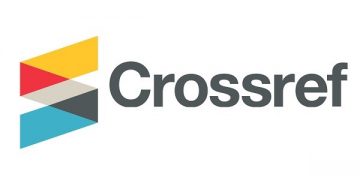Hubungan Penggunaan Gadget Terhadap Potensi Gangguan Pemusatan Perhatian Dan Hiperaktivitas Pada Anak Prasekolah Dipaud Bougenville Cawang
DOI:
https://doi.org/10.61722/jinu.v1i5.2577Keywords:
Gadgets, ADHD, Early childhoodAbstract
This study examines the relationship between gadget use and the potential for Attention Deficit and Hyperactivity Disorders (GPPH) in preschool children. The American Academy of Pediatrics recommends gadget use for preschoolers for no more than 1 hour per day. Gadget addiction can affect a child's brain development because excessive production of the hormone dopamine disrupts the maturity of the prefrontal cortex function, namely controlling emotions, self-control, responsibility, decision making and other moral values. Excessive use of gadgets can also cause problems such as ADHD. The intensity of gadget use was measured using a gadget usage habits questionnaire and GPPH using the Abbreviated Conners Rating Scale (ACRS). This study used a cross-sectional design with 27 respondents in PAUD Bougenville, Cawang with a percentage of 100%, and as many as 29.6% had normal results with a total of 8 children and as many as 70.4% had potential ADHD results with a total of 19 people. Based on the Kendall Tau test, the p-value was 0.005 < 0.05. The results of the correlation test between the gadget intensity variable and the potential for GPPH show that between the variables there is a correlation coefficient (R) of 1,000. This can mean that there is a perfect correlation between the two variables with a strong and significant level of relationship because of the sig value. less than 0.05. It is concluded that there is a significant relationship between gadget use and the risk of attention deficit hyperactivity disorder in preschool children
References
ADD Resource Center. 2017. ADHD Numbers: Facts, Statistics, and You. [Media Elektronik] [diakses pada 6 januari 2019]. Tersedia dari: https://www.addrc.org/adhd-numbers-facts-statistics-and-you/ADHD Institude. 2017. Environmental risk factors. [Materi Elektronik] [diakses pada 05 agustus 2018]. Tersedia dari: https://adhd-institude.com/burdenof adhd/aetiology/environmental-risk-factors.
Abdulatif, S., & Lestari, T. (2021). Pengaruh gadget terhadap perkembangan sosial anak di masa pandemi. Jurnal Pendidikan Tambusai, 5(1), 1490–1493.
Alia T & Irwansyah. 2018. Pendampingan Orang Tua pada Anak Usia Dini dalam Penggunaan Teknologi Digital. A Journal of Language, Literature, Culture, and Education. 14(1): 65-78.
American Academy of Pediatric. 2016. Media and Young Minds. Pediatric. 138(5): 1-8.
Arisyahputra, D. (2019). Dio Arisyahputra Perancangan Aplikasi Pemantauan Tumbuh Kembang Anak Berbasis Android Design Monitoring Application Child Growth Based on Android. Jurnal Sistem Komputer, 8(1), 1–7
Aulya,Y., Suprihatin., & Arantika, R. (2019). Durasi dan Frekuensi penggunaan Gawai terhadap Perkembangan Sosial Anak Prasekolah di TK Islam Permata Hati Kelapa Dua Kabupaten Tangerang. Jurnal Kebidanan. Vol 6(4). P427-434.
Ask H, Gustavson K, & Ystrom E. 2018. Gestational Age at Birth With Symptoms of Attention-Deficit/Hyperactivity Disorder in Children. JAMA Pediatrics. 172(8): 749-756.
Asosiasi Psikiatri Amerika . Washington, DC: Penerbitan Psikiatri Amerika; 2013. Manual Diagnostik dan Statistik Gangguan Mental, Edisi Kelima DSM-5TM
Badan Pusat Statistik. (2023). Statistik Penduduk anak usia dini 2023. Jakarta: Badan Pusat Statistik. pada https://pareparekota.bps.go.id
Beyens, I. 2018. Is there a link between screen media use and ADHD? [Media Elektronik] [diakses pada 6 januari 2019]. Tersedia dari: https://adhdinstitude. com/is-there-a-link-between-screen-media-use-and-adhd/
Bradshaw LG & Kamal M. 2014. Prevalence of ADHD in Qatari. Journal of Attention Disorders. 21(5): 442-449.
Byun YH, Ha M, Kwon HJ, Hong YC, Leem JH, Sakong J, et al. 2013. Mobile Phone Use, Blood Lead Levels, and Attention Deficit Hyperactivity Symptoms in Children: A Longitudinal Study. PLOS ONE. 8(3):1-10
Chang LY, Wang MY, & Tsai PS. 2016. Diagnostic Accuracy of Rating Scales for Attention-Deficit/Hiperactivity Disorder: A Meta-analysis. Pediatrics. 137(3): 1-13.
Daryanti, Menik & Fitriahadi, Enny. (2022). Intensity of The Use of Gadgets to Attention Deficit Disorder in Children. Jurnal Kebidanan. 11. 133. 10.26714/jk.11.2.2022.133-146.
Eka Larasati, K., Ayu, K., Kebidanan, S., Tinggi Ilmu Kesehatan Buleleng, S., & Profesi Bidan, P. (2022). dampak pemberian gadget pada anak balita di desa patemon kecamatan seririt. In Jurnal Kesehatan Medika Udayana (Vol. 08, Issue 02).
Fitriahadi, E., & Tyastiti, V. H. (2020). the impacts of the use of gadgets on the development of children 3-6 years of age. The Southeast Asian Journal of Midwifery, 6(1).
Fisher, A., Thiessen, E., Godwin, K., Kloos, H., & Dickerson, J. (2013). Assessing selective sustained attention in 3- to 5-year-old children: evidence from a new paradigm. Journal of experimental child psychology, 114(2), 275–294. https://doi.org/10.1016/j.jecp.2012.07.006
Hoseini, Bibi & Ajilian, Maryam & Moghaddam, Habibolah & Khademi, Gholamreza & Saeidi, Masumeh. (2014). Attention Deficit Hyperactivity Disorder (GPPH) in Children: A Short Review and Literature. International Journal of Pediatrics. 2. 443-450. 10.22038/ijp.2014.3749.
Husna, A., & Suryana, D. (2021). Analisis pola asuh demokratis orang tua dan implikasinya pada perkembangan sosial anak di desa koto iman kabupaten kerinci. Jurnal Pendidikan Tambusai, 5, 10128–10140.
Kementrian Kesehatan RI. 2016. Pedoman Pelaksanaan Stimulasi, Deteksi dan Intervensi Dini Tumbuh Kembang Anak Ditingkat Pelayanan KesehatanDasar. Jakarta: Kementrian Kesehatan RI.
Lubis, M. A., & Azizan, N. (2020). Penggunaan Gadget Untuk Anak Usia Dini Saat Situasi Pandemi Covid-19. Jurnal Kajian Gender Dan Anak Pusat Studi Gender Dan Anak (PSGA), 4(1).
Magnus W, Nazir S, Anilkumar AC, et al. Attention Deficit Hyperactivity Disorder. [Updated 2023 Aug 8]. In: StatPearls [Internet]. Treasure Island (FL): StatPearls Publishing; 2023 Jan-. Available from: https://www.ncbi.nlm.nih.gov/books/NBK441838/
M, Sundus. (2017). The Impact of using Gadgets on Children. Journal of Depression and Anxiety. 07. 10.4172/2167-1044.1000296.
Medically reviewed by Timothy J.Legg, PhD, Psy, (2023)
Novita, D., Wardani, D. W. S. R., & Kurniawaty, E. (2019). Hubungan Penggunaan Gadget (Smartphone) Dengan Suspek Gangguan Pemusatan Perhatian Dan Hiperaktivitas Di SD Al Kautsar Bandar Lampung. Majority, 8(1), 108–114
Naufal, Adnan & Safitri, Eri & Nurulinsani, Atikah & Eko Susilo, Taufik & Darojati, Hafizhah & Pristianto, Arif & Awanis, Almas. (2023). Hubungan Durasi Penggunaan Gadget Terhadap Gejala Attention Deficit Hyperactivity Disorder (GPPH). fisio mu: Physiotherapy Evidences. 4. 152-160. 10.23917/fisiomu.v4i2.22133.
Posner, J., Polanczyk, G. V., & Sonuga-Barke, E. (2020). Attention-deficit hyperactivity disorder. Lancet (London, England), 395(10222), 450–462. https://doi.org/10.1016/S0140-6736(19)33004-1
Statistik, B. P. (2020). Pandemi Covid-19 Dorong Anak-anak Aktif Menggunakan Ponsel. 16 April, 2020
Stiglic, N., & Viner, R. M. (2019). Effects of screentime on the health and well-being of children and adolescents: A systematic review of reviews. BMJ Open, 9(1). https://doi.org/10.1136/bmjopen-2018- 023191
Suhartanti, I., Rufaida, Z., Setyowati, W., & Ariyanti, F. W. (2019). Effectiveness of Colouring and Playdough Method on Fine Motoric Skills of Pre School Student in Mojokerto, Indonesia. International Journal of Innovative Research and Development, 8(10). https://doi.org/10.24940/ijird/2019/v8/i10/oct19074
Setianingsih, S. (2018). Dampak Penggunaan Gadget Pada Anak Usia Prasekolah Dapat Meningkatan Resiko Gangguan Pemusatan Perhatian Dan Hiperaktivitas. Gaster, 16(2), 191.
Steinhausen H, C, Döpfner M, Schubert I. [Tren waktu dalam frekuensi GPPH dan obat stimulan] Z Kinder Jugendpsychiatr Psychother. 2016; 44(04):275–284
Sasanti, Y. 1998. Penentuan validitas dan reliabilitas Abbreviated Conners Teacher Rating Scale (ACTRS) sebagai penyaring kegiatan hiperaktivitas [Tesis]. Jakarta: Universitas Indonesia.
Tong L, Xiong X, & Tan H. 2016. Attention-Deficit/Hiperactivity Disorder and Lifestyle-Related Behaviors in Children. PLOS ONE. 11(9): 1-13.
Vuriyanti, M., Rahmawati, I., & Suhari, S. (2023). The effect of gadjet on attention deficit hyperactivity disorder (GPPH) in preschool children: literatur review. Unej e-Proceeding, , 287-293. Retrieved from https://jurnal.unej.ac.id/index.php/prosiding/article/view/40233
Von der Hyde R. L. (2011). Occupational therapy interventions for shoulder conditions: A systematic review. American Journal of Occupational Therapy. 65: 16–23. https://doi.org/10.5014/ajot.2011. 0918
Wasliah, I., Pratiwi, E. A., & Pradnyantayani, N.L. P. (2020). Hubungan Penggunaan Gadget Terhadap Risiko Gangguan Pemusatan
Perhatian Dan Hiperaktivitas Anak Usia Prasekolah Di Paud Cempaka Desa Batu Mekar Lingsar. PrimA: Jurnal Ilmiah Ilmu Kesehatan, 6(2). http://id.stikesmataram.ac.id/ejournal/index.php/JPRI/article/view/178/143
Downloads
Published
Issue
Section
License
Copyright (c) 2024 JURNAL ILMIAH NUSANTARA

This work is licensed under a Creative Commons Attribution-ShareAlike 4.0 International License.













